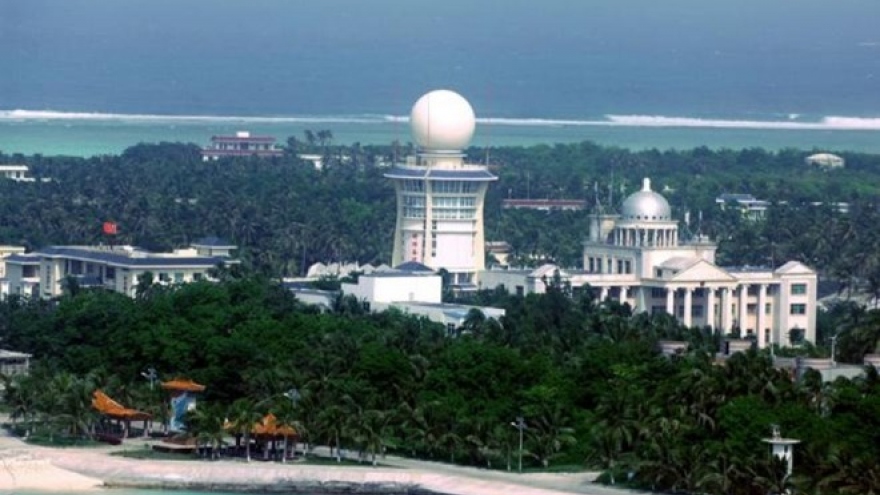PCA award helps resolve East Sea issue
VOV.VN - One month after the Permanent Court of Arbitration (PCA) decided an award on the Philippines’ arbitration proceedings against China on interpretation and application of 1982 UN Convention on Law of Sea, public shows concern over implementation of the ruling.
 |
|
|
Although it would take much time and effort for the ruling to be implemented, the public agree that PCA is a legal tool for the East Sea issue in the future.
The arbitral proceedings since the Philippines filed a lawsuit to the Permanent Court of Arbitration in 2013 were in compliance with the 1982 UN Convention on the Law of the Sea.
PCA’s decisions are internationally recognized and legally binding to parties involved in the case.
Efforts to seek peaceful measures
The Philippines’ lawsuit against China has not complicated the situation but it aims to resolve disputes by peaceful means without using or threatening to use force in addressing international disputes.
It shows respect to international law and illustrates the international community’s effort.
Once countries had discussed and agreed on an international legal framework, they have to adjust their behaviors in dealing with maritime demarcation issues.
The PCA’s ruling is the first of its kind on the East Sea issue. It provides a common interpretation of some contents in the UNCLOS, which were unclear among involved parties, including the structures of features in the Spratly archipelago.
The interpretation will be a legal foundation to be applicable to similar cases in the future.
The feasibility of PCA’s ruling
Analysts say PCA’s ruling can be realized. Firstly PCA operates in accordance with the UNCLOS and its ruling must be observed.
The Court does not judge territorial disputes but identifies the legality of the actions and, in some cases, verifies the maritime territorial rights of countries.
Secondly being members of the UNCLOS, China, the Philippines, and relevant countries are obliged to respect PCA’s decision.
An individual country will be unable to succeed in maintaining regional peace and stability while it vetoes articles it ratified previously. Lastly China has repeatedly mentioned its “peaceful development” policy.
So it should not go against the policy which has been pursued by its previous leaderships.
One month after the PCA announced its ruling, China has continuously rejected it as null and void. But there has been no escalation in Beijing’s statements, analysts said.
2 years ago China escalated its activities in the East Sea including the placing of an oil rig in Vietnam’s Paracel archipelago. Widespread criticism against China and its consequences have made China more cautious.
Since then there has been no similar incident in the exclusive economic zone (EEZ) of claimants in the East Sea.
PCA creates an opportunity for negotiation
Negotiation is the key solution to ease tension. Realizing this fact both China and the Philippines have expressed their willingness to negotiate.
Philippine President Rodrigo Duterte said at his swearing-in ceremony that he would seek a “soft landing” in its East Sea dispute with China.
The Philippines’ former President Fidel Ramos and China’s former Deputy Foreign Minister Fu Ying met recently but didn’t mention marine disputes in the East Sea such as in Scarborough Shoal and Mischief.
The meeting focused on the need to engage in dialogue to build trust and ease tension, paving the way for cooperation.
Analysts say it’s innocent to say that the PCA’s ruling in the East Sea would fully stabilize the situation. But the ruling has created an opportunity for countries to sit down for talks.
It would help countries adjust their behaviors and avoid unilateral actions regardless of international law.


